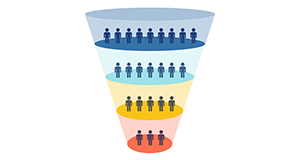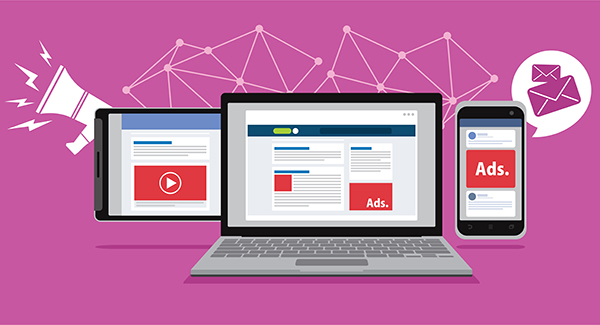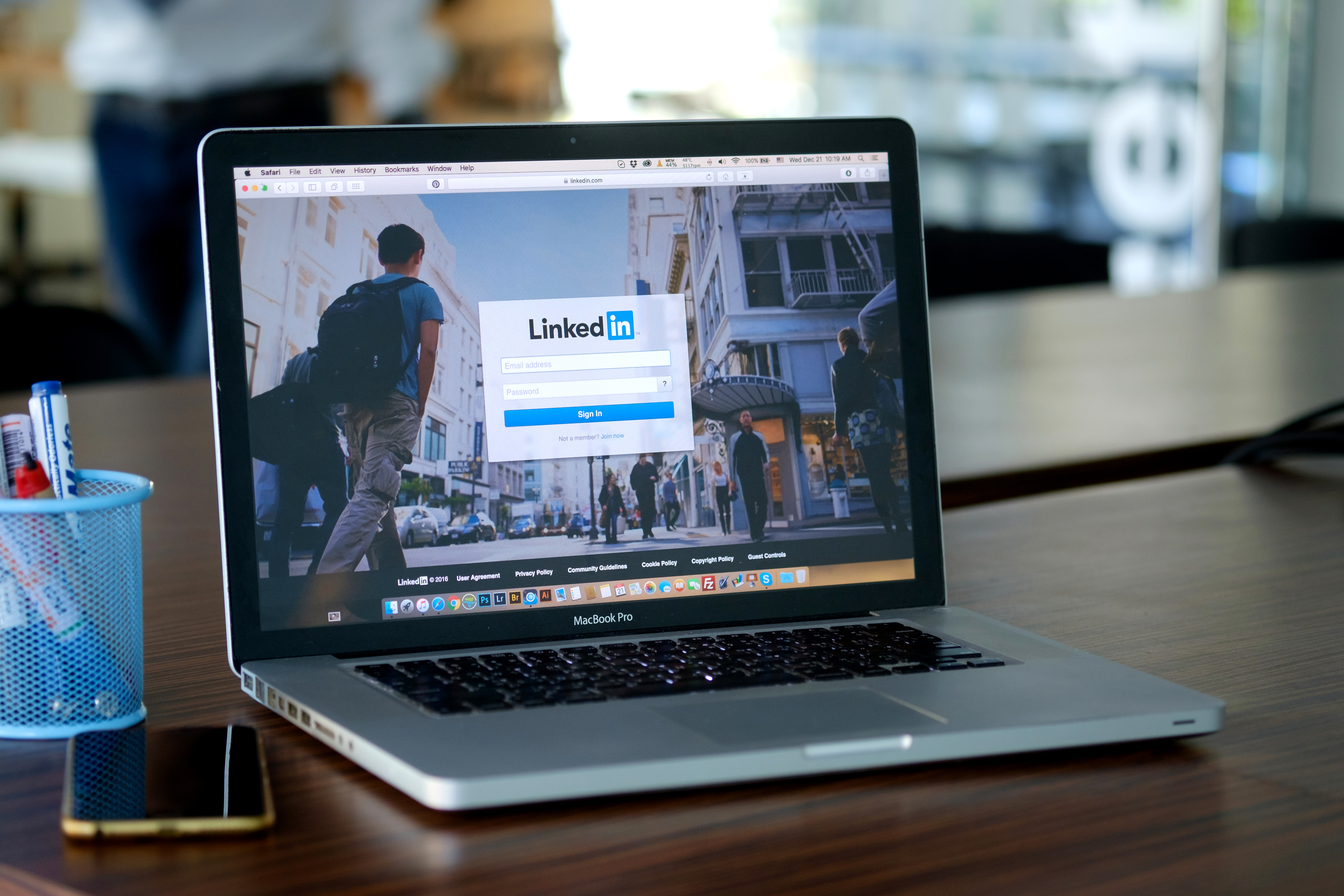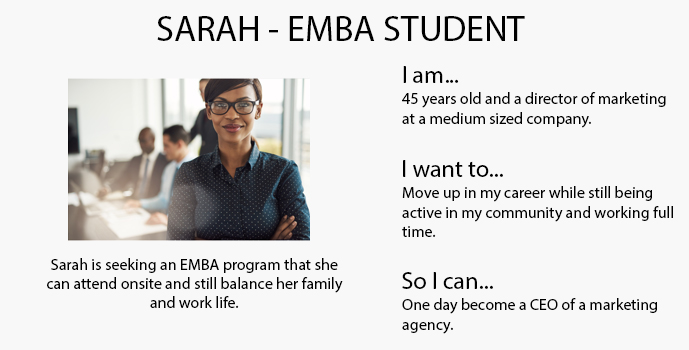Maximizing CRM: Unique communications tracks, content and frequency
 Customer Relationship Management. There are platforms designed around this idea, but even if you don’t have a formal platform, but rather a process, every B-school can benefit from a communications map to keep leads and prospects engaged.
Customer Relationship Management. There are platforms designed around this idea, but even if you don’t have a formal platform, but rather a process, every B-school can benefit from a communications map to keep leads and prospects engaged.
Find out how you can manage your relationships with prospective students using different communications tracks, content and frequency.
Communications Tracks
Once a lead enters into your system, you’ve likely obtained some key information that will help you tailor the messages you send them. Or, if they entered in through a short info request form, you can always follow up to find out more about them. These demographics can be considered as you segment your messaging:
- Gender
- Geographic location
- Specialty groups: military, healthcare, etc.
- Program of interest
- Entry year
- Title
- Industry
- Age
When you know any or all of these aspects of a person’s background, you can assign them into a “track” within your communications map that is in addition to the general communications track that everyone receives. For example, if you are located in Michigan and you’re offering information sessions in Ohio, it probably makes sense to tell prospects from Ohio that you’ll be in their area with a personal message. Or, if you are offering a military scholarship, consider sending out a separate communications flow to the military applicants in your pool. In addition, you can further segment messaging based on industries like healthcare or IT to communicate the benefits of your program.
Content Variation
Not everyone responds the same to the same message. Just as we discussed above, you have a melting pot of people in your funnel and they are all looking for different things. Once you’ve determined your communications tracks, you can decide on the content. For the general communications track that everyone receives, you can use program features & benefits, ROI and admissions criteria & events. Once you start digging into your segmentation, try to focus on the core motivations of each sub-group. Here are some examples:
- For gender-tailored content, consider:
- Women: climb the corporate ladder, flexibility, lead with confidence, advance your pay scale, collaborative environment that values your talents
- Men: prepare yourself for leadership, powerfully elevate your career, make an impact, become a dealmaker, reposition your career, solidify your advancement
- For age differences, consider:
- Millennials: be transparent, get to the point, focus on their goals and community
- Gen X: include data, emphasize results, stay away from clichés
- Boomers: try clever humor, focus on how you can make their lives better
- For industry ideas, consider messaging targeted at how your program can impact those in these fields/stages of career:
- Healthcare
- Entrepreneurs
- Executives vs. career launchers
- IT
- Strategy
- Marketing
- Finance
The goal here is to focus on what motivates these segments and fine-tune your messaging to connect with them.
Frequency
While some prospects are hyper-engaged and ready to act right now, there are others who are just starting their search and want to “browse.” So how do you strike the balance of giving everyone what they need, when they need it, but not turning them off? The answer is a structured plan. Even for the hottest prospects, you want to be sure you’re not coming on too strong.
For all prospects, consider an email campaign, or a communications map that is auto-triggered to send messages every 10 days (following lead entrance into the system). For the active leads, you can layer on a calling or text campaign. In addition, you may consider mailings, i.e. sending your brochure, a postcard with events (although these may be hard to track). Also, don’t discount the power of social media. This is a great supplement to the communications you’re sending because the prospects can consume this information on their terms, giving them the feeling of control. If they are following you, it is likely that they are seeing what you’re posting every 1-3 days. Be sure to vary your content, and also be aware of what you’re posting on social to reduce duplication.
By mapping out your communications, considering your audience’s motivations and varying your frequency, you can find ways to connect with your prospects on their terms.
Find out more about how to engage prospects with email nurture campaigns through your CRM platform. Contact GPRS.

 If you’re in B-school admissions or marketing, you’re familiar with the common push-pull of who’s responsible for filling your next class.
If you’re in B-school admissions or marketing, you’re familiar with the common push-pull of who’s responsible for filling your next class. It’s been a year, or two, or 5. Are they still considering continuing their education, did they already complete another program or did they give up the dream?
It’s been a year, or two, or 5. Are they still considering continuing their education, did they already complete another program or did they give up the dream? Depending on who you talk to — marketing, admissions, administrators, faculty — these may be the most important people in your funnel and the ones that deserve the highest dollar investment. If your leads are qualified, engaged and ripe for the opportunity at hand (your degree program), they will be much more likely to turn into prospects and seated students. Sounds obvious, right? Then why are there so many temptations to shortcut the lead generation process?
Depending on who you talk to — marketing, admissions, administrators, faculty — these may be the most important people in your funnel and the ones that deserve the highest dollar investment. If your leads are qualified, engaged and ripe for the opportunity at hand (your degree program), they will be much more likely to turn into prospects and seated students. Sounds obvious, right? Then why are there so many temptations to shortcut the lead generation process? It’s crunch time. You’re finishing your final round of admissions events for the year. Your class is starting to round itself out, but you’ve still got those final seats to fill. You’re looking at each and every lead in your funnel, trying to predict which ones will take action.
It’s crunch time. You’re finishing your final round of admissions events for the year. Your class is starting to round itself out, but you’ve still got those final seats to fill. You’re looking at each and every lead in your funnel, trying to predict which ones will take action. An awareness campaign lives at the very top of the funnel. They are the simplest campaigns to deploy. A potential lead has never heard of your program. They may be considering going back to school to further their career but don’t know yet which college they’d like to attend. They may be researching through Google when they come across your awareness ad.
An awareness campaign lives at the very top of the funnel. They are the simplest campaigns to deploy. A potential lead has never heard of your program. They may be considering going back to school to further their career but don’t know yet which college they’d like to attend. They may be researching through Google when they come across your awareness ad. There’s a firm in town that’s been reaching out. They’re really nice, and have a great website. Some of the other departments are using them and seem to like them. Sounds like a no-brainer for your graduate program’s needs, right?
There’s a firm in town that’s been reaching out. They’re really nice, and have a great website. Some of the other departments are using them and seem to like them. Sounds like a no-brainer for your graduate program’s needs, right? SEO and SEM are two very different animals, but they can be finessed into working harmoniously together. In order to create a complete and comprehensive graduate program marketing strategy, it’s best to apply them both holistically.
SEO and SEM are two very different animals, but they can be finessed into working harmoniously together. In order to create a complete and comprehensive graduate program marketing strategy, it’s best to apply them both holistically.
 In order to develop a marketing plan with impact, you must first determine who your prospective student should be. In order to do this you must ask yourself three questions:
In order to develop a marketing plan with impact, you must first determine who your prospective student should be. In order to do this you must ask yourself three questions:

